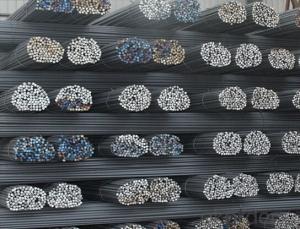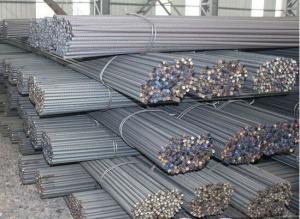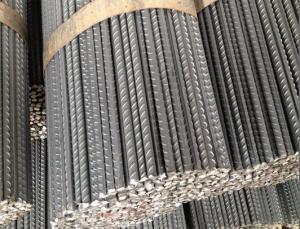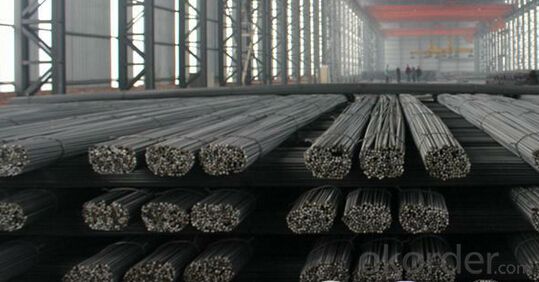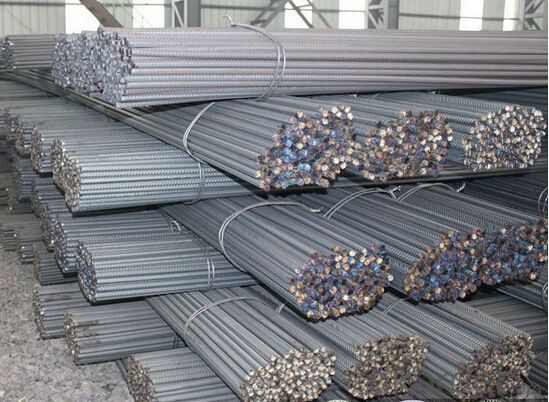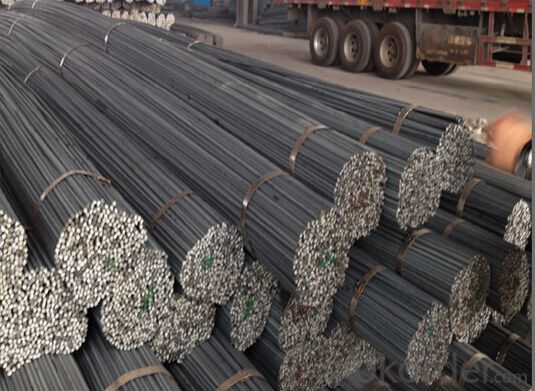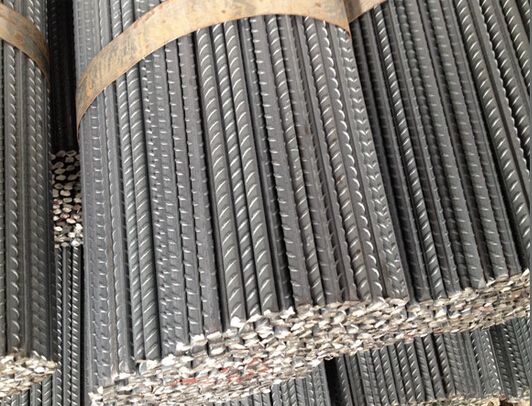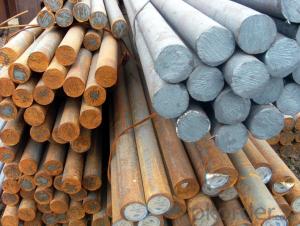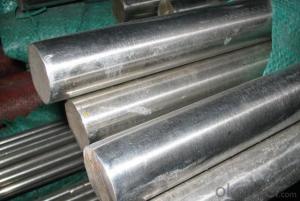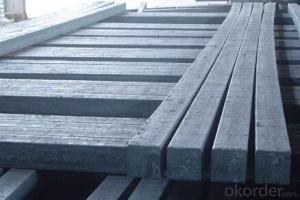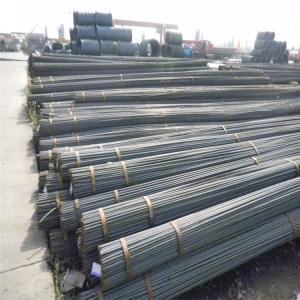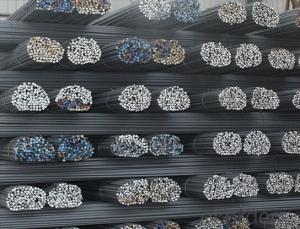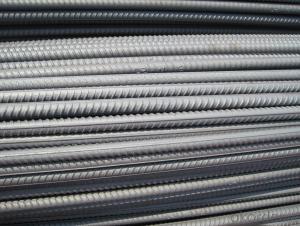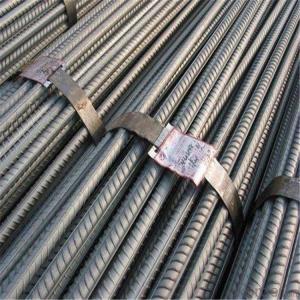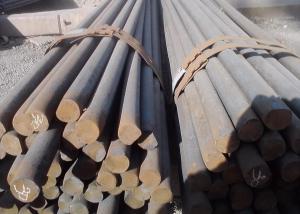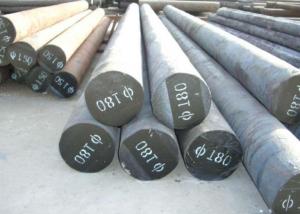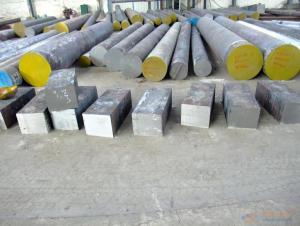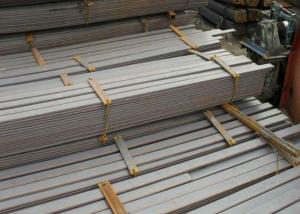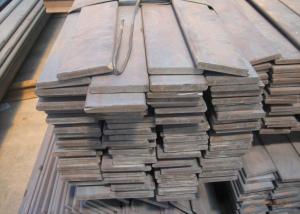Round Bar and Deformed Bar Grade 460A_460B
- Loading Port:
- Tianjin
- Payment Terms:
- TT OR LC
- Min Order Qty:
- 50 m.t.
- Supply Capability:
- 10000 m.t./month
OKorder Service Pledge
OKorder Financial Service
You Might Also Like
Specification
Round Bar and Deformed Bar Grade 460A_460B
Details of Round Bar and Deformed Bar Grade 460A_460B
Name | Deformed Bar |
Shape | Round Bar |
Standard | 1.GB1499.2-2007, HRB335, HRB400E 2. ASTM A615 Gr.40, Gr.60 3.BS4449/1997 |
Diameter | 6mm-50mm |
Length | 6m, 8m, 9m,12m as standard or as request |
Test | SGS/UT 100% Elements Testing |
Certificate: | ISO/Mill Certificate |
Service: | 24 hours online service / |
more than 20 years trading and manufacture | |
Quality Assurance: | the third party inspection, such as SGS, BV, TUV…etc. is acceptable |
Packaging Details: | Seaworthy Packaging or as per customer's packing instruction |
Specification of Round Bar and Deformed Bar Grade 460A_460B
Standard | Grade | Yield Strength Mpa | Tensile Strength | Elongation% |
BS4449:1997 | 250 | 250 | 295 | 22 |
460A | 460 | 485 | 12 | |
460B | 460 | 500 | 15 | |
GB1499.2-2007 | HRB335/335E | 335 | 455 | 17 |
HRB400/400E | 400 | 540 | 17 | |
HRB500/500E | 500 | 630 | 16 | |
ASTM A615 & A615M-04a | GRADE40 | 280 | 420 | 12 |
GRADE60 | 420 | 620 | 9 | |
GRADE75 | 520 | 690 | 7 | |
JIS G3112-2004 | SD295A | ≥ 295 | 440-600 | 17 |
SD295B | 295-390 | ≥ 440 | 17 | |
SD345 | 345-440 | ≥490 | 19 | |
SD390 | 390-510 | 560 | 17 | |
SD490 | 490-625 | ≥ 620 | 13 |
Size | WEIGHT | WEIGHT | QUANTITY | ||
LENGTH 6M | LENGTH 12M | LENGTH 6M | LENGTH 12M | ||
6 | 0.222 | 1.332 | 2.664 | 751 | 375 |
8 | 0.395 | 2.37 | 4.74 | 422 | 211 |
10 | 0.617 | 3.702 | 7.404 | 270 | 135 |
12 | 0.888 | 5.328 | 10.656 | 188 | 94 |
14 | 1.21 | 7.26 | 14.52 | 138 | 69 |
16 | 1.58 | 9.48 | 18.96 | 106 | 53 |
18 | 2 | 12 | 24 | 83 | 42 |
20 | 2.47 | 14.82 | 29.64 | 67 | 34 |
22 | 2.98 | 17.88 | 35.76 | 56 | 28 |
25 | 3.85 | 23.1 | 46.2 | 43 | 22 |
28 | 4.83 | 28.98 | 57.96 | 35 | 17 |
32 | 6.31 | 37.86 | 75.72 | 26 | 13 |
36 | 7.99 | 47.94 | 95.88 | 21 | 10 |
40 | 9.87 | 59.22 | 118.44 | 17 | 8 |
50 | 15.42 | 92.52 | 185.04 | 11 | 5 |
CNBM Introduction of Round Bar and Deformed Bar Grade 460A_460B Supplier
CNBM International Corporation is the most import and export platform of CNBM group(China National Building Material Group Corporation) ,which is a state-owned enterprise, ranked in 270th of Fortune Global 500 in 2015.
With its advantages, CNBM International are mainly concentrate on Cement, Glass, Iron and Steel, Ceramics industries and devotes herself for supplying high quality series of refractories as well as technical consultancies and logistics solution.
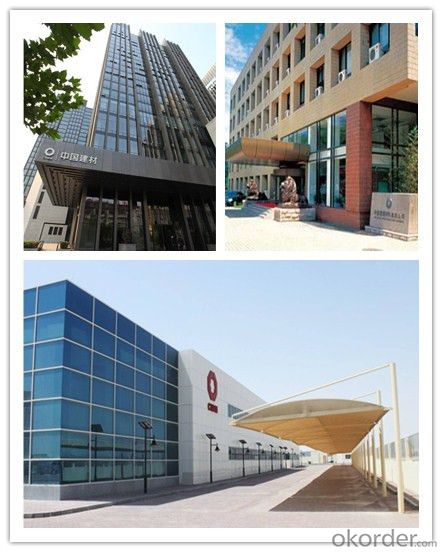

Packaging & Delivery of Round Bar and Deformed Bar Grade 460A_460B
Packaging Detail | Sea worthy packing /as per customer's packing instruction |
Delivery Detail | 15 ~ 40 days after receiving the deposit |
Products Show
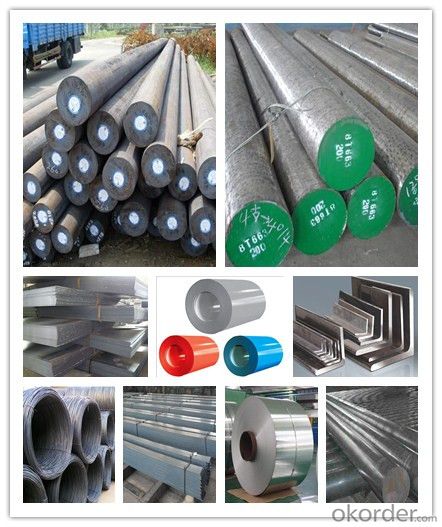
FAQ:
Are you a trading company or manufacturer? | Manufacturer |
What’s the MOQ? | 3 metric ton |
What’s your delivery time? | 15-35 days after downpayment received |
Do you Accept OEM service? | Yes |
what’s your delivery terms? | FOB/CFR/CIF |
What's the Payment Terms? | 30% as deposit,70% before shipment by T/T |
Western Union acceptable for small amount. | |
L/C acceptable for large amount. | |
Scrow ,Paybal,Alipay are also ok | |
Why choose us? | Chose happens because of quality, then price, We can give you both. Additionally, we can also offer professional products inquiry, products knowledge train (for agents), smooth goods delivery, excellent customer solution proposals. |
What's your available port of Shipment? | Main Port, China |
What’s your featured services? | Our service formula: good quality+ good price+ good service=customer's trust
|
Where are your Market? | Covering more than 160 countries in the world |
- Q: What are the main factors affecting the formability of special steel?
- The formability of special steel, like any other type of steel, is influenced by several factors. These factors include the composition of the steel, its microstructure, mechanical properties, temperature, and strain rate. The composition of special steel plays a crucial role in its formability. The presence of alloying elements, such as chromium, nickel, molybdenum, and vanadium, can significantly affect the steel's ability to be formed. These elements can alter the steel's strength, ductility, and resistance to deformation. The microstructure of special steel is another key factor affecting its formability. Fine-grained steels tend to have better formability compared to coarse-grained steels. The presence of non-metallic inclusions, such as sulfides and oxides, can also influence formability by acting as stress concentrators and promoting crack formation. The mechanical properties of special steel, such as yield strength, tensile strength, and elongation, directly impact its formability. Steels with higher yield strength are generally more difficult to form, as they require greater force to deform. However, steels with high elongation can undergo larger plastic deformation before failure, making them more formable. Temperature is another critical factor affecting the formability of special steel. At elevated temperatures, the steel becomes more ductile and easier to deform. This is due to the reduction in yield strength and increased mobility of dislocations within the crystal structure. However, excessively high temperatures can also lead to grain growth, which negatively impacts formability. The strain rate, or the rate at which deformation is applied to the steel, also affects formability. Higher strain rates can cause strain hardening, where the steel becomes stronger and less formable. Conversely, lower strain rates allow for greater plastic deformation and improved formability. In conclusion, the formability of special steel is influenced by its composition, microstructure, mechanical properties, temperature, and strain rate. Understanding and optimizing these factors is essential for achieving the desired formability and shaping capabilities of special steel in various applications.
- Q: How does heat treatment affect the properties of special steel?
- Heat treatment can significantly impact the properties of special steel. By subjecting the steel to controlled heating and cooling processes, its mechanical properties can be modified. For instance, heat treatment can enhance the steel's hardness, strength, and toughness, making it more suitable for specific applications. Additionally, heat treatment can alter the steel's microstructure, such as grain size and distribution, thereby affecting its corrosion resistance and overall performance. Overall, heat treatment plays a crucial role in tailoring the properties of special steel to meet desired requirements.
- Q: What grade of iron powder should be used for processing special steel? Are there any other elements on the request? How much are they?
- Special steel into high quality carbon steel, alloy steel, high alloy steel (alloy element is greater than 10%) three categories, including alloy steel and high alloy steel special steel production accounted for 70%.
- Q: What are the different types of electrical steel?
- There are several different types of electrical steel, including grain-oriented electrical steel (GOES), non-grain-oriented electrical steel (NGOES), silicon steel, and amorphous steel.
- Q: How does special steel perform in terms of corrosion resistance?
- Special steel has excellent corrosion resistance due to its high content of alloying elements, such as chromium, nickel, and molybdenum. These elements form a protective layer on the surface of the steel, preventing corrosive substances from reaching the underlying metal. Additionally, special steel can be further enhanced with surface treatments or coatings to enhance its resistance to corrosion in harsh environments.
- Q: What is the impact strength of special steel?
- The impact strength of special steel is typically higher than that of regular steel, which means it can withstand greater force or shock without breaking or deforming.
- Q: What are the different production methods for special steel?
- Special steel can be produced using various methods, each with its unique advantages and characteristics. Some commonly used methods include: 1. Electric Arc Furnace (EAF): Scrap steel is melted in an electric arc furnace, where intense heat generated by an electric current melts the materials. EAF is known for its flexibility, as it can produce a wide range of steel grades and alloys. 2. Basic Oxygen Furnace (BOF): Molten iron from a blast furnace is combined with scrap steel and oxygen in this process to remove impurities and adjust the carbon content. BOF is famous for its high production capacity and the ability to produce large quantities of steel. 3. Vacuum Induction Melting (VIM): VIM is a method employed to produce high-quality and high-purity steel. It involves melting the raw materials in a vacuum environment to prevent contamination and achieve precise control over the alloy composition. 4. Continuous Casting: Molten steel is poured into a water-cooled mold in this method, which continuously produces solidified steel slabs, blooms, or billets. Continuous casting is efficient and capable of producing consistent and defect-free steel products. 5. Powder Metallurgy: Metal powders are compacted and sintered to produce steel with specific properties in this technique. Powder metallurgy enables the production of complex shapes, improved mechanical properties, and the incorporation of challenging-to-achieve alloying elements through traditional methods. 6. Additive Manufacturing (AM): AM, also known as 3D printing, is a relatively new method for producing special steel. It involves layer-by-layer deposition of metal powders, which are then fused together using heat or a laser. AM offers design freedom, the capability to produce complex geometries, and the potential for customized steel parts. Each production method possesses its advantages and limitations, and the selection depends on factors such as desired steel properties, production volume, cost considerations, and the specific requirements of the end-use application.
- Q: What are the common techniques for testing the quality of special steel?
- Some common techniques for testing the quality of special steel include chemical analysis, mechanical testing, non-destructive testing, and metallography. Chemical analysis involves examining the composition of the steel to ensure it meets the required specifications. Mechanical testing involves subjecting the steel to various forces and measuring its strength, hardness, and other mechanical properties. Non-destructive testing methods such as ultrasound, radiography, and magnetic particle inspection are used to detect any defects or flaws in the steel without causing damage. Metallography involves examining the microstructure of the steel under a microscope to assess its grain size, inclusion content, and overall quality. These techniques help ensure that special steel meets the necessary standards and requirements.
- Q: What are the main characteristics of tool steel?
- Tool steel is a type of steel that possesses several key characteristics, including high hardness, wear resistance, toughness, and heat resistance. It is specifically designed to be used in the production of tools and dies, where it needs to withstand intense pressure, abrasion, and high temperatures. Additionally, tool steel has the ability to retain its shape and sharpness even under heavy use, making it highly durable and reliable for various industrial applications.
- Q: How are copper alloys used in electrical applications?
- Copper alloys are extensively used in electrical applications due to their excellent electrical conductivity and thermal properties. They are used in the production of electrical wires, connectors, and busbars, ensuring efficient transmission of electricity. Copper alloys also offer good corrosion resistance, making them suitable for outdoor and marine electrical systems. Additionally, their high strength and ductility allow for easy fabrication and installation in various electrical components.
Send your message to us
Round Bar and Deformed Bar Grade 460A_460B
- Loading Port:
- Tianjin
- Payment Terms:
- TT OR LC
- Min Order Qty:
- 50 m.t.
- Supply Capability:
- 10000 m.t./month
OKorder Service Pledge
OKorder Financial Service
Similar products
Hot products
Hot Searches
Related keywords
